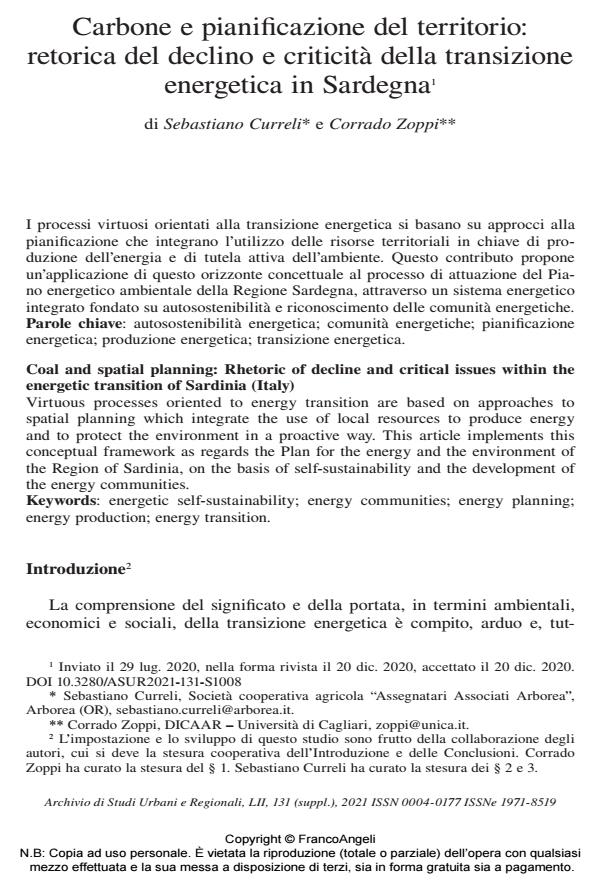Carbone e pianificazione del territorio: retorica del declino e criticità della transizione energetica in Sardegna
Titolo Rivista ARCHIVIO DI STUDI URBANI E REGIONALI
Autori/Curatori Sebastiano Curreli, Corrado Zoppi
Anno di pubblicazione 2021 Fascicolo 2021/suppl. 131
Lingua Italiano Numero pagine 20 P. 166-185 Dimensione file 136 KB
DOI 10.3280/ASUR2021-131-S1008
Il DOI è il codice a barre della proprietà intellettuale: per saperne di più
clicca qui
Qui sotto puoi vedere in anteprima la prima pagina di questo articolo.
Se questo articolo ti interessa, lo puoi acquistare (e scaricare in formato pdf) seguendo le facili indicazioni per acquistare il download credit. Acquista Download Credits per scaricare questo Articolo in formato PDF

FrancoAngeli è membro della Publishers International Linking Association, Inc (PILA)associazione indipendente e non profit per facilitare (attraverso i servizi tecnologici implementati da CrossRef.org) l’accesso degli studiosi ai contenuti digitali nelle pubblicazioni professionali e scientifiche
I processi virtuosi orientati alla transizione energetica si basano su approcci alla pianifica-zione che integrano l’utilizzo delle risorse territoriali in chiave di produzione dell’energia e di tutela attiva dell’ambiente. Questo contributo propone un’applicazione di questo orizzonte concettuale al processo di attuazione del Piano energetico ambientale della Regione Sar-degna, attraverso un sistema energetico integrato fondato su autosostenibilità e riconosci-mento delle comunità energetiche.
Parole chiave:autosostenibilità energetica; comunità energetiche; pianificazione energe-tica; produzione energetica; transizione energetica.
- Computational Science and Its Applications – ICCSA 2025 Workshops Martina Marras, pp.333 (ISBN:978-3-031-97650-6)
- New Metropolitan Perspectives Roberto Gerundo, Alessandra Marra, Michele Grimaldi, pp.2833 (ISBN:978-3-031-06824-9)
- Computational Science and Its Applications – ICCSA 2025 Workshops Alessandra Marra, Michele Grimaldi, Isidoro Fasolino, Monica M. L. Sebillo, pp.122 (ISBN:978-3-031-97662-9)
- Computational Science and Its Applications – ICCSA 2024 Workshops Alessandra Marra, Domenica Luciano, pp.256 (ISBN:978-3-031-65272-1)
Sebastiano Curreli, Corrado Zoppi, Carbone e pianificazione del territorio: retorica del declino e criticità della transizione energetica in Sardegna in "ARCHIVIO DI STUDI URBANI E REGIONALI" suppl. 131/2021, pp 166-185, DOI: 10.3280/ASUR2021-131-S1008